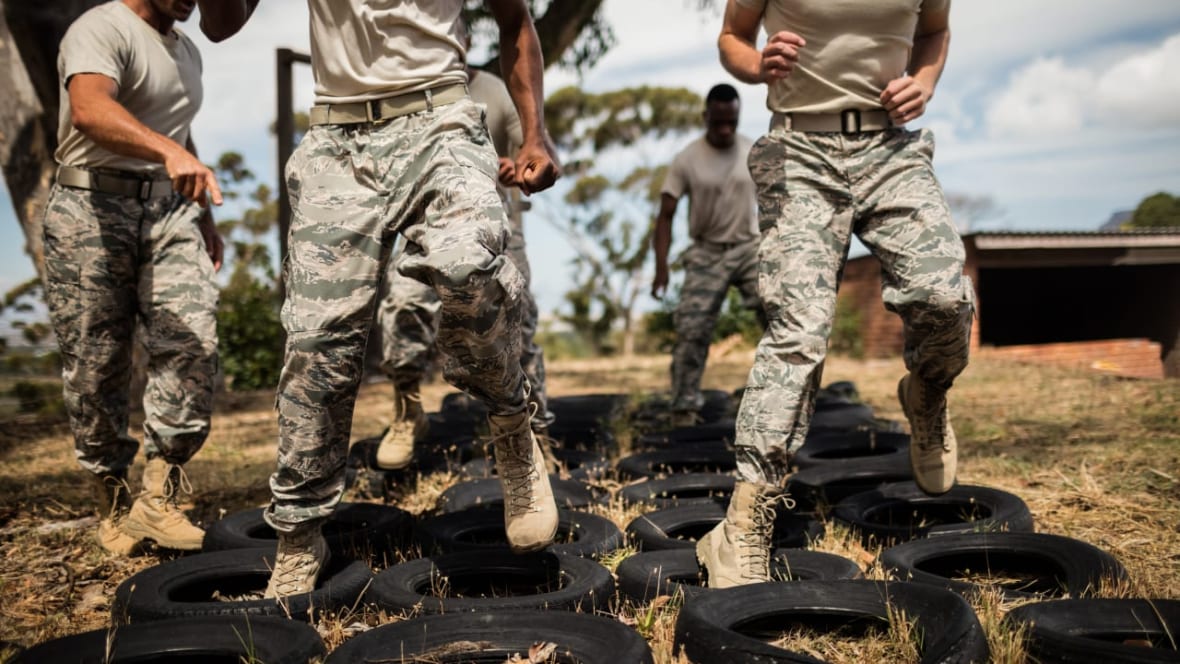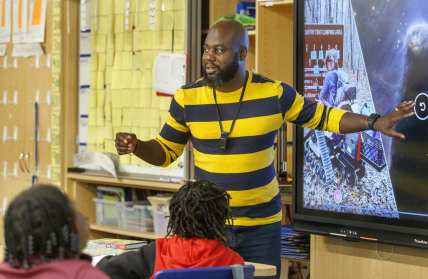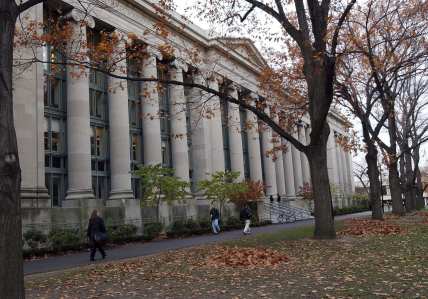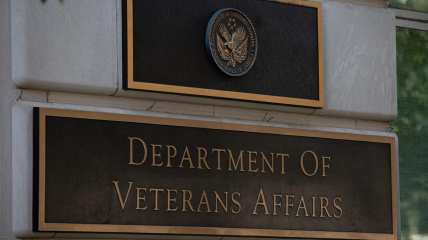Report: Many schools catering to non-white and low-income students are pushing military courses
According to The New York Times analysis, more than 80% of schools with at least three-quarters of first-year students enrolled in JROTC had a predominantly Black or Hispanic student body.
Dozens of schools across the country with a high enrollment of nonwhite and low-income students are reportedly forcing students into the Junior Reserve Officers’ Training Corps (J.R.O.T.C.) program.
According to The New York Times analysis of Army data and 200-plus public records, more than 80% of high schools with at least 75% of first-year students enrolled in JROTC had a predominantly Black or Hispanic student body. Meanwhile, the percentages at other J.R.O.T.C. high schools and those without the program were more than 50% and around 30%, respectively.
The Pentagon has stated that mandating students to complete J.R.O.T.C. programs, which veterans of the armed forces teach at more than 3,500 high schools across the nation, is against its policies.

However, The Times discovered that thousands of public school students were placed in the courses either as an explicit mandate or by automatic registration.
The compulsory nature of some J.R.O.T.C programs also concerns parents like Julio Mejia of Fort Meyers, Florida. “If she wanted to do it, I would have no problem with it,” he said of his daughter who tried to get out of a required J.R.O.T.C. class in 2019 when she was a freshman, and was initially refused. “She has no interest in a military career. She has no interest in doing any of that stuff. The only word I can think of is ‘indoctrination.’”
Jesús Palafox, 33, who was involved in Chicago’s fight against automatic enrollment in the program, called it “hugely problematic.” He noted that after a J.R.O.T.C. instructor at his high school approached him and persuaded him to join the program and enlist in the military, he was concerned that the program was “brainwashing” youngsters.
“A lot of recruitment for these programs are happening in heavy communities of color,” Palafox said, The Times reported.
J.R.O.T.C. classes offer instruction in various topics, including leadership, civic values, weapons handling and financial literacy. Pentagon officials eagerly promote the $400 million-a-year program, which has tripled in size since the 1970s, despite their longstanding insistence that it is not a recruiting tool. According to the Army, 44% of the troops who joined its ranks in recent years attended a J.R.O.T.C. school.
Commander Nicole Schwegman, a Pentagon spokeswoman and a former J.R.O.T.C. participant, said the program’s primary goal is to help young people develop into more capable students and responsible adults. “It’s really about teaching kids about service, teaching them about teamwork,” she told The Times.
Schwegman voiced concern about The Times’ findings on enrollment practices, arguing that schools shouldn’t force teens to join J.R.O.T.C. because the military does not request that high schools make it mandatory.
High school principals, who have embraced the program, claim that it inspires struggling students, teaches self-discipline to disruptive pupils and fosters a feeling of community among those who might otherwise feel alone.
Indeed, school officials across the country provided a variety of justifications for enrolling a sizable portion of their students in J.R.O.T.C, from leadership training to team-building to filling gaps in coursework loads. Administrators in Pike County, Alabama, where J.R.O.T.C. is required of all incoming first-year students, stated that the program’s emphasis on leadership and character helped students develop better study habits and become more involved in extracurricular activities.
“All in all, it seems to be a very positive thing that we’ve got right now,” said Jeremy Knox, who leads the district’s career education programs.
Military officials also cite studies showing that J.R.O.T.C. students had greater attendance and graduation rates and fewer behavioral issues at school.
But critics like Sylvia McGauley, a former high school history teacher in Troutdale, Oregon, argue that the program’s strict discipline places more value on compliance than independence and critical thought. “The version of history that I was hearing from my J.R.O.T.C. kids was quite different from the versions of history that I tried to teach in my classroom,” she said.
Seeming to buttress McGauley’s point about the difference in the military and civilian versions of history, The Times found a U. S. Navy textbook that appears to blame U.S. political leaders for a lack of a military victory in Vietnam. Conversely, the article states that civilian books point out that South Vietnamese citizens’ lack of support for their government “hindered” a U.S. military triumph.
Opponents also note that the program’s high concentration in schools with low-income and non-white student populations encourages such students to enlist in the military rather than encouraging them to pursue alternative options like college or jobs in the private sector.
Schools could have another motive for enrolling students in J.R.O.T.C.: financial. In states where the course can count toward graduation, some schools use it instead of hiring civilian teachers for classes like wellness and physical education. The military pays the salaries of its J.R.O.T.C. instructors, The Times reports.
TheGrio is FREE on your TV via Apple TV, Amazon Fire, Roku and Android TV. Also, please download theGrio mobile apps today!



